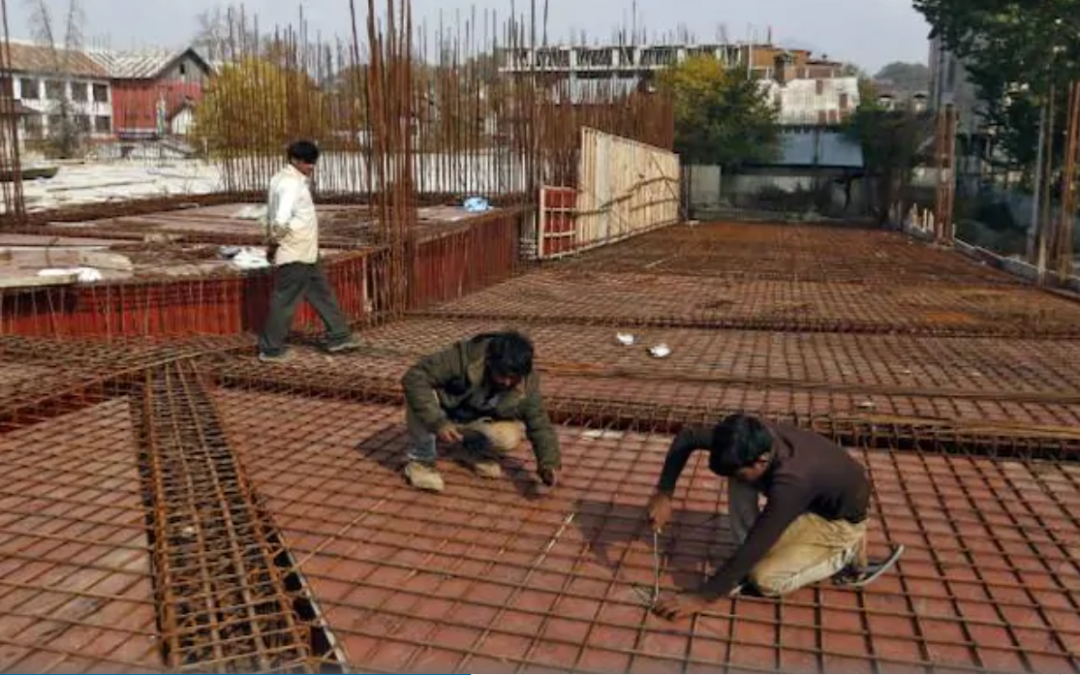Somya Mathur, Badri Narayanan Gopalakrishnan and Upmanyu Bhardwaj
A pathogen has the power to reboot the massive economies from an era of globalisation to that of regionalism, protectionism, scepticism and localisation. The COVID-19 outbreak has also given a peek into the vulnerabilities of global economic order.
As nearly half of the world shutters under a lockdown, the focus is to meet the demand of basic essential goods and services, and spurring up production of life support medical equipment and personal protection equipment (PPE).
The Indian economy has grown due to globalisation and mega-city centric growth, alluring investments. However, these huge urban agglomerations (UA), swelling with dense populations and intense mobility, act as a catalyst for the spread of pestilence. New York, the biggest urban centre of the world, has become a coronavirus hot spot in the United States, and, likewise, in India it is Mumbai.
After COVID-19 is put behind us, we ought to ease off our massive urban centres, which are a symbol of lop-sided development. Redress of regional imbalances was a priority of policy makers until the emergence of free markets. Collective memory is too short to remember the scourge of Spanish flu in 1918, which started in India from Bombay, and wiped out about 18 million in the country. Though the 1994 Surat plague, Swine Flu in 2009 and 2015, and the 2018 Nipah virus outbreak in Kerala were wakeup calls, we remained unprepared for emerging challenges. Recently, India witnessed a mass exodus of migrant workers from the UAs during the initial days of the 21-day lockdown.
To understand the existence of preventive measures in an event of contagion in the poorest strata of these urban centres, we studied a sample of data (Demographic and Health Survey, 2015-16) on households living in 18 major UAs of India, where 22 percent of the sample population are poor; of these poor households, 62 percent live in overcrowded houses where social distancing is impossible; and, 94 percent have a single bathroom in the household, making self-quarantine difficult.
Here even social awareness is a challenge, as only 32 percent own a television and 3 percent own a radio, though 80 percent own a mobile phone. About 56 percent have to go outside to fetch water, which means social distancing might not be possible, in addition to the disease spreading at the water source. About 25 percent don’t have water and 58 percent don’t have soap placed where they wash their hands.
Proper hand hygiene is also a challenge in these households. The Swachh Bharat Mission launched in 2014, made some strides in building toilets and inculcating general hygiene practices, though hand-washing facilities are not a part of the mission.
Our study shows that 80 percent of the poor households don’t treat water before drinking. It also gives a glance into the living conditions of the urban poor, where the advent of a contagious disease could take a toll. Probably this was a reason why these migrants preferred to go back to their towns and villages. With this exodus, we must think of alternative strategies to provide employment to them in their towns and villages, so as to prevent economic migration to the UAs.
Our GTAP model-based analysis suggests a GDP-contraction in India by around $140 billion if the shutdown lasts till the year-end, affecting all sectors. For example, agriculture, textiles/apparel and automotive output will fall by 1.5 percent, 3.2 percent and 2 percent, respectively. Free international trade may recede and each nation may develop indigenous industry to cater to their domestic needs. Enough has been said by the likes of Nobel laureate Abhijit Banerjee about the need to provide direct transfers to the poor — a more pertinent question is: in this scenario, where do we stand with such a huge population, crippling economy and large informal sector?
The upside of this crisis is that it has given us an opportunity to realign our growth strategies and bring about structural changes in our policies that prioritise the poor and redress regional imbalances, apart from fostering the digital economy. The government may incentivise growth and establishment of industries in tier-3 cities and adjoining towns as per the available skillsets, resources and proximity of the intermediate industries and the markets from these regions.
This article was originally published in Money Control

